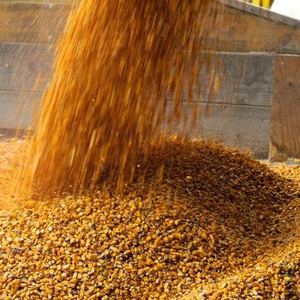USDA: Corn use for fuel ethanol at 300 million bushels in May

July 28, 2020
BY Erin Voegele
The USDA recently released its Grain Crushings and Co-Products Production report for July, reporting that corn use for ethanol production was at 300 million bushels in May, up from the previous month, but down from May 2019.
Total corn consumed for alcohol and other uses was 354 million bushels in May, up 18 percent from April, but down 31 percent from May 2019. May usage included 89.4 percent for alcohol and 10.6 percent for other purposes.
Corn consumed for fuel alcohol reached 300 million bushels, up 22 percent from April, but down 35 percent when compared to May 2019. Corn consumed in May for dry milling fuel production and wet milling fuel production was 85.2 percent and 14.8 percent, respectively.
Advertisement
Advertisement
Sorghum consumed for fuel alcohol production fell to 2.047 million hundredweight (cwt) (114,632 tons) in May, down from 2.716 million cwt in April and down from 5.176 million cwt in May 2019.
At dry mills, condensed distillers solubles production was at 81,971 tons, up from 78,629 tons in April, but down from 115,995 tons in May 2019. Corn oil production was at 104,898 tons, up from 89,132 tons in April, but down from 157,623 tons in May of the previous year. Distillers dried grains production was at 205,750 tons, up from 173,465 tons in April, but down from 401,171 tons in May 2019. Distillers dried grains with solubles production was at 1.23 million tons, down from 1.01 million tons in April, but down from 1.94 million tons in May 2019. Distillers wet grains production fell to 696,152 tons, down from 696,475 tons in April and 1.36 million tons in May of the previous year. Modified distillers grains production fell to 242,264 tons, down from 274,285 tons in April and 456,572 tons in May 2019.
Advertisement
Advertisement
At wet mills, corn germ meal production fell to 64,200 tons, down from 51,929 tons in April and 68,852 tons in May 2019. Corn gluten feed production was at 291,064 tons, up from 231,145 tons in April, but down from 298,347 tons in May of the previous year. Corn gluten meal production was at 91,013 tons, up from 76,897 tons in April, but down from 93,185 tons in May 2019. Wet corn gluten feed production was at 224,695 tons in May, up from 188,258 tons in April, but down from 269,967 tons in May of the previous year.
Carbon dioxide captured at dry and wet mills fell to 149,453 tons, down from 162,926 tons in April and 235,559 tons in May 2019.
Related Stories
Calumet Inc. on May 9 announced sustainable aviation fuel (SAF) capacity at its Montana Renewables biorefinery is expected to reach 120 MMgy to 150 MMgy sooner than previously reported for a fraction of the originally expected cost.
Tidewater Renewables on May 8 announced that its 3,000-barrel-per-day renewable diesel plant in Prince George, British Columbia, operated at 75% capacity during the first quarter, up from 71% during the same period of last year.
Aemetis Inc. released Q1 results on May 8, reporting increased biogas production, progress with efficiency improvements at the Keyes ethanol plant, and resumed biodiesel deliveries. Financing activities are also underway for a proposed SAF project.
The USDA reduced its estimate for 2024-’25 soybean use in biofuel production in its latest WASDE report, released May 12. The agency expects soybean oil use in biofuel to increase during the 2025-’26 marketing year.
HutanBio's microalgal biofuel production shown to be net-negative in an independent life cycle assessment by EcoAct
HutanBio on May 8 announced that the production process for its proprietary HBx microalgal biofuel achieves net-negative carbon emissions, based on an independent cradle-to-gate life cycle assessment (LCA) conducted by EcoAct.
Upcoming Events










